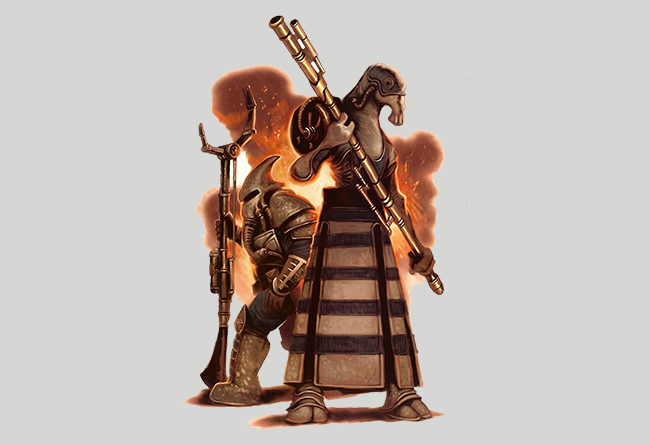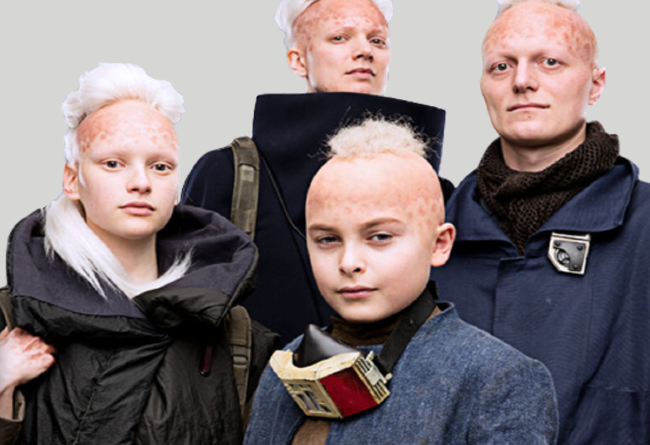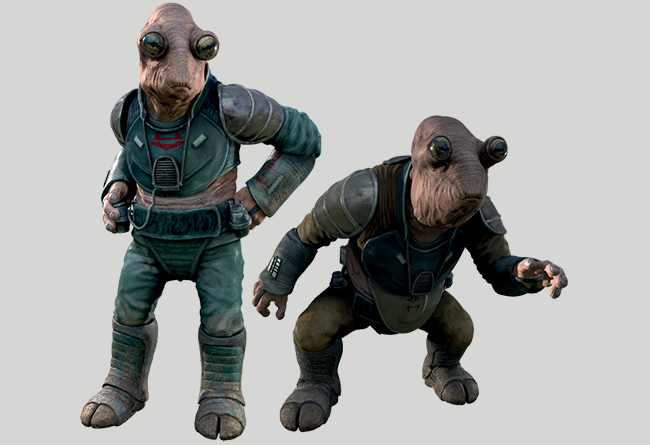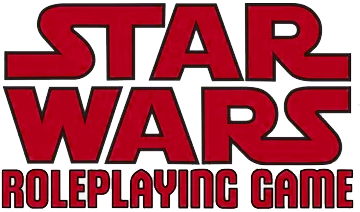Species: Vurk
Home Planet: Sembla
Attribute Dice: 12D
DEXTERITY 1D+2/3D+1
KNOWLEDGE 2D/4D
MECHANICAL 1D/3D
PERCEPTION 2D+1/4D+2
STRENGTH 2D+2/4D+2 T
TECHNICAL 1D+2/4D
Special Abilities:
Breathe Underwater: As amphibious beings, Vurks cannot drown underwater.
Expert Swimmers: Vurks get a permanent 2D bonus to swimming.
Story Factors:
Placid: Vurks are renowned for their ability to remain calm and collected, even in the face of danger. They get a 2D willpower bonus to resist fear and losing his temper.
Nomads: As nomads, Vurks are accustomed to moving around, even through dangerous places. They get a 1D bonus to survival rolls.
Move: 10 (6 swimming)
Size: 1.7-2.0 meters
Background: The Vurk were a reptilian sentient species that was native to the planet Sembla. They had green, dark green, or gray skin. It was thought that the Vurk were a primitive species, but they were highly empathetic and skilled mediators. They had a bony crest sitting atop their heads. The head crest was a key feature of the species and continued to grow throughout the life of the Vurk. Jedi Master Coleman Trebor was a member of this species. Another Vurk was Sweitt Concorkill, who was present at the Galaxies Opera House with Supreme Chancellor Palpatine on Coruscant during the last days of the Clone Wars.
Like their ancient predecessors, Vurks maintained a semi-nomadic existence on Sembla, avoiding the establishment of permanent settlements. Vurks formed communities based on a shared set of philosophical values, as well as selected homes based on the world’s seasons. Unique to the Vurk way of life was the system of dividing the community based on needs and desires of the mind, more so than competition for resources. When it came time for a village to move on, individuals would abandon family more times than not, to join a new village or start their own alongside friends and acquaintances to form a more perfect society. This process was repeated often, making it highly likely that an adult Vurk would come to live among several successful communities over a lifetime.
While much of the galaxy considered the Vurk a primitive culture, the species was actually guided by an advanced meritocratic social structure. They were very intelligent and believed in a highly developed philosophical tradition that emphasized personal integrity and individual freedom and encouraged personal honesty. Their compassionate and calm manner made them better than average diplomats. An individual’s status was determined by their own accomplishments and reputation, and discussion of one’s deeds was a vital part of community engagement. While non-Vurk often interpreted this practice as gossip or bragging, Vurks encouraged heated debate and admired differing opinions. Out of these discussions arose a set of loose rules and laws which governed the temporary community; those who could not abide would move on to find a village which was more compatible with their worldview. This constant debate over morality and philosophy was not indicative of ill-tempered savages. Instead, the Vurks viewed their culture as one in which the constant interrogation of their own beliefs made them more in tune with ethics then other cultures who did not encourage introspection.
The debate over the acceptability of violence was one that was negotiated case-by-case. Across Vurk society, however, almost all individuals agreed that murder in all forms except euthanasia, was wrong. Out of this belief came the Stricture of Violence, which encouraged continuous debate of views, rather then the cessation of disagreement through the ending of a life. Young Vurk males were married off by their parents; those who failed to marry before reaching adulthood remained bachelors for the rest of their lives.





